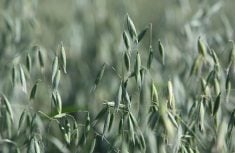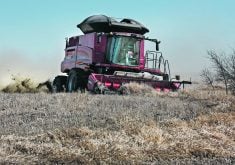Interest for plant guide
A new range plant guide has proven popular with livestock producers, the native community and eco-tourists alike.
Field Guide: Identification of Common Range Plants of Southern Saskatchewan was prepared by Zoheir Abouguendia, a rangeland agrologist with Saskatchewan Agriculture in Swift Current.
“The guide covers the common plants found in the grasslands of Saskatchewan, and will be of most use to those living south of the North Saskatchewan River,” said Abouguendia. “It was prepared in response to producer needs to plan for management and improvement of their rangelands.”
Read Also

VIDEO: Green Lightning and Nytro Ag win sustainability innovation award
Nytro Ag Corp and Green Lightning recieved an innovation award at Ag in Motion 2025 for the Green Lightning Nitrogen Machine, which converts atmospheric nitrogen into a plant-usable form.
Abouguendia said producers needed a practical guide that was simple, clearly illustrated and convenient enough to use in the field. Each of the 72 species of grasses, shrubs and broadleafed herbs is illustrated by a line drawing with short descriptions and arrows pointing to the plant parts that make it easier to identify each species.
“The use of this guide is the first step toward range evaluation and planning. It answers the question, ‘what do I have?’ The next step is to go to other publications to find out how and when their plants grow, and how they respond to grazing and improvement practices.”
Demand for the guide other than for grazing management has been surprising. Those involved in eco-tourism find it useful as a guide to the diversity of prairie plants, and Indian bands are interested because of the potential medicinal value of the native species.
The guide is available for free at all Rural Service Centres. A similar field guide is planned for use in northern Saskatchewan.
– Saskatchewan Agriculture
Annual crops for pasture
For the past five year, researchers at the Agriculture Canada Swift Current station have been successfully grazing yearling steers from May to September almost exclusively on annual crops.
Gain for the steers has averaged 2.3 pounds per day and about one and one-half acres per steer were required for a 135-day season. In two of five years, fall rye had not been sown the previous fall and so perennial pasture was used in May and early June.
One of the key elements of managing annual crops for grazing is to match the crop to the season.
Since fall rye is the only winter annual cereal consistently surviving the winters at Swift Current, it is the only crop that can be sown in fall for May and early June use. Oats, barley, triticale or wheat may be sown in April or early May for grazing about six weeks later. A winter annual sown in the spring will provide pasture for August and September – all rye, winter wheat or winter triticale.
Many producers are trying for extended use by mixing spring and winter annuals. Fall rye and oats sown in May are a popular choice for grazing from June to September.
Rotating animals among several pastures will make the system work better because more animals per unit area means grazing will be more uniform.
There are also disadvantages to using annuals for grazing – the expense of establishing the crop (seed, fertilizer, herbicides and tillage) and trampling losses can be half of the total forage crop initially but can improve soil tilth and fertility. Much of that damage is caused when livestock graze in a wet field. Soil compaction and trampling losses can be reduced if livestock can be moved to a perennial pasture during rainy weather.
Some annuals may be toxic at certain growth stages while nitrates may be high in oats or sorghum-sudangrass.
– Agriculture Canada














